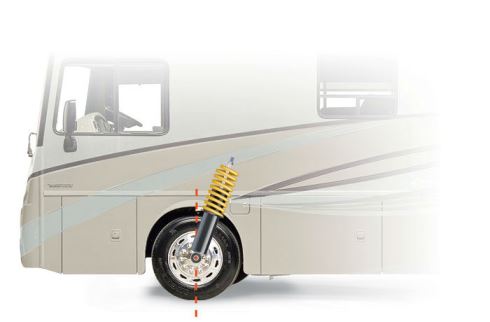Motorhome handling problems and uneven tire wear may signal a need for adjustments.
By Mark Quasius, F333630
June 2016
Proper chassis alignment is critical to any vehicle, especially a large motorhome. Tires must track correctly in order to provide a stable platform so that the coach handles smoothly and safely. If the alignment is off, not only will the tires wear prematurely, but the motorhome can be difficult to control.
Initial Steps
Tire inflation pressures that exceed what is required to carry the measured load will contribute to a rougher ride. Excessive pressures also minimize the contact patch of the tire, which reduces traction because of crowning of the tread. An underinflated tire, on the other hand, cannot safely carry the measured weight and may be subject to damage from overheating. If accurate scale readings have not been obtained, for safety reasons it’s best to favor higher pressures.
If the ride height is not within specs, the weight may shift between the front and rear axles, resulting in an overworked axle. The ride height also affects the driveshaft angle. A ride height not within specs can result in driveline vibrations that prematurely wear out universal joints. Because ride height can affect per-axle weights, to ensure accurate scale readings, it’s important to have the ride height checked and, if necessary, adjusted before weighing the coach.
 Front-End Alignment
Front-End Alignment
In comparison, an example of extreme negative caster is a grocery shopping cart that has a worn wheel bearing. The cart wobbles and shakes, and it’s difficult to drive in a straight line. A motorhome without enough caster will want to dart and dive and will be difficult to drive. Most chassis alignment specifications require a few degrees of caster to add some stability to the handling.

